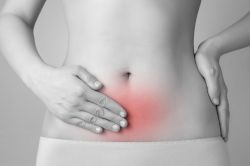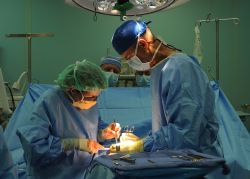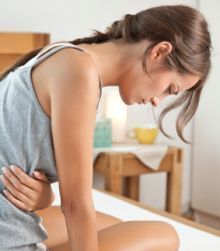Endometriosis Advice and Support

Endometriosis is a complex and disabling disease which requires the best care to manage the disease. This often includes drug therapy, surgery, natural treatments or a combination of treatments.
Unfortunately this disease can go un-diagnosed for many years as doctors confuse your symptoms with other pelvic diseases. This can lead to more damage being done to your reproductive organs and can eventually lead to the disease spreading even further. The advice below will help you gain an insight into the disease and how to progress with obtaining treatment.
Let's start with some basics for those who need support ......
What is endometriosis
Endometriosis is a disease that affects women and girls, mainly in their reproductive years. It can have far-reaching effects in the body with many symptoms.
It is a gynaecological condition that causes painful periods and heavy bleeding as the main symptoms. It is caused by the abnormal growth of cells (endometrial cells) around the pelvic cavity. These cells are similar to those found in the lining of the womb called the endometrium. More....
Development of endometriosis
Endometriosis develops when the abnormal endometrial cells become implanted around the pelvic cavity and on the surface of other organs in the pelvic area. These stray cells behave the same way as the cells in the lining of the womb and respond to the hormones of your monthly cycle.
In response to these hormones and the menstrual cycle these cells thicken, then break down with your period. However, as there is nowhere for these cells to go, they become trapped. This process is then repeated every month and these cells become larger and then develop into endometriosis, causing cysts, adhesions and scar tissue. More ....
Symptoms of endometriosis
The most common symptoms are pelvic pain, and heavier periods. The number of days that pain occurs can also increase and some women have reported being in pain most of the month. It is also common to have pain with urination, pain with bowel movements, and pain with intercourse.
The common early signs and symptoms of the disease include:
- painful periods and heavy bleeding
- diarrhoea and constipation
- pain in lower abdomen
- periods more frequent and irregular bleeding
- feeling generally run down
Find the complete list of symptoms here
Diagnosis of endometriosis
There are various tests used to diagnose endometriosis. However, the only way to get a confirmed diagnosis is by surgery with a procedure called Laparoscopy, where the surgeon can visibly see the implants or endometrial cysts in the pelvic cavity.
In the early stages of presenting your symptoms to a health care provider, a physical exam including a pelvic exam will usually be performed. There can be many problems obtaining a true diagnosis, as this disease has similar symptoms to various other health problems including Pelvic Inflammatory Disease and Irritable Bowel Syndrome. More ...
Treatment for endometriosis
There are various surgical and drug treatments for endometriosis, and the choice of treatment is usually determined by the severity of the disease.
The most common treatments offered include:
- Pain management drugs
- Birth control Pill - which is prescribed for continual use for 6 to 9 months to stop further growth
- Hormone drugs which work by stopping periods and halting the further growth of implants
- Surgery to remove implants, cysts, and any adhesions that may have developed - usually performed with laparoscopy surgery
- Hysterectomy - offered as treatment for the disease, but often the disease can come back, especially if hormone replacement therapy is given, as the drugs containing hormones will 'feed' the disease.
More details of different treatment options HERE
Pain management
Endometriosis causes pain for most women and this pain can be severe requiring medication to be able to cope.
The pain can be constant and be very disabling requiring pain mediation for most of the time.
The pain is generally located in the abdomen but can spread to other areas of the body. As well as pain with menstruation, it can also be caused by inflammation, scar tissue, post operative pain, and adhesions. More ....
Natural treatments for endometriosis
Using natural treatments is gradually gaining more interest and in many cases can provide long term success. This success can include a major reduction in symptoms, being able to achieve full term pregnancy, or returning to normal activities in life.
The use of natural treatments can include:
- Diet and nutrition
- Homoeopathy
- Herbal medicine, Traditional Chinese Medicine
- Acupuncture - especially helpful for pain
- Naturopathic treatment
Find out more about natural treatments HERE
If you suspect you have endometriosis you need to get diagnosed as soon as possible, because the longer this disease is left unchecked, the more damage it will do. If your symptoms are not being taken seriously by your health care provider, then you need to seek a second opinion.
For some women it has taken years to get diagnosed. This usually happens because painful periods are seen as 'normal'. Your pain is real, and your periods should not be a time to be dreaded.
Reference:
https://en.wikipedia.org/wiki/Endometriosis
https://www.mayoclinic.org/diseases-conditions/endometriosis/diagnosis-treatment/drc-20354661
https://www.nichd.nih.gov/health/topics/endometri/conditioninfo/treatment
http://endometriosis.org/treatments/












